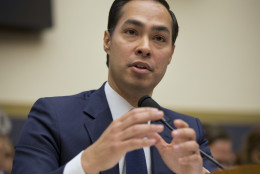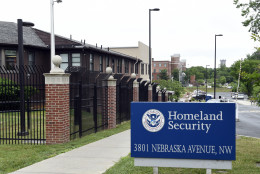Federal Employee Viewpoint Survey
-
The annual federal employee viewpoint survey will be coming out soon. It will give people a chance to sound off about the Trump administration's reorganization plans. It will also give managers a look at what the rank-and-file is thinking. Margot Conrad, director of education and outreach at the Partnership for Public Service, elaborates on this opportunity on Federal Drive with Tom Temin.
April 26, 2017 -
The Office of Management and Budget's plan to reorganize the government and restructure the federal workforce isn't a direct threat to agency employees, OMB Director Mick Mulvaney said. The Trump administration sees it as a way to finally recognize what Mulvaney describes as a deep-seated frustration in the federal workforce: top performers are rarely rewarded for their work, while poor-performers escape with few consequences.
April 12, 2017 -
Secretary of Housing and Urban Development Julian Castro, after presiding over two-year of workforce and process improvements at the agency, has a few suggestions for his successor and the incoming administration.
January 13, 2017 -
With the final release of the long-awaited federal HR policy rewrite, agencies will see shorter future Federal Employee Viewpoint Surveys and fewer human capital management reporting requirements.
December 28, 2016 -
The Office of Personnel Management released the full results of the 2016 Federal Employee Viewpoint Survey, which give greater insight into federal employees' thoughts on their leaders and supervisors, overall job satisfaction and training and development opportunities. OPM this year focused on making comparisons of agencies by size. Specifically, OPM broke down organizations' results by very large, large, medium, small and very small agencies. The report gives a more detailed view of agencies' progress on employee engagement and inclusion.
October 06, 2016 -
Millenials in the federal workforce feel engaged in their agency's mission, but it remains to be seen how motivated they'll feel about the civil service midway through their government careers and beyond.
October 05, 2016 -
At first glance, this year's results of the Federal Employee Viewpoint Survey might not show many significant improvements. But several large and small agencies, including the Housing and Urban Development Department and the Office of Special Counsel, made noticeable improvements in employee engagement this year.
September 26, 2016 -
The federal workforce is slightly more engaged this year than it was in 2015. Though there were few surprises at the top and bottom of the rankings among large agencies, several small agencies made large strides and improvements. Here are six of the most important, surprising or interesting takeaways from the initial results of the 2016 Federal Employee Viewpoint Survey.
September 20, 2016 -
Welcome to the #FedFeed, a daily collection of federal ephemera gathered from social media and presented for your enjoyment.
September 20, 2016 -
What do federal employees have to say about this year's Federal Employee Viewpoint Survey?
September 20, 2016 -
The federal workforce said it was slightly more engaged at their agencies. Employee engagement rose slightly in 2016, rising from 64 percent in 2015 to 65 percent this year, according to the newly released results of the Federal Employee Viewpoint Survey.
September 20, 2016 -
Kimya Lee, the Office of Personnel Mangement's senior adviser on research and evaluation, and the rest of the Federal Employee Viewpoint Survey team are finalists for a Service to America medal in the Management Excellence category for all the work they’ve done over the years. Lee tells Jared Serbu on Federal Drive with Tom Temin, they’re still working to go deeper into federal agencies.
August 26, 2016 -
When it comes to presidential transition plans at federal agencies, career federal employees say their managers aren't doing enough to keep them in the loop.
August 10, 2016 -
A new study reviews federal personnel data for employees over age 50, along with feedback from the Federal Employee Viewpoint Survey, to determine what other factors — besides employees' ages — might affect their decisions to retire from the civil service.
August 05, 2016 -
A deep dive into the 2015 Federal Employee Viewpoint Survey data shows that agency morale has a lot to do with satisfaction in the information technology and human resources workforces.
July 18, 2016















